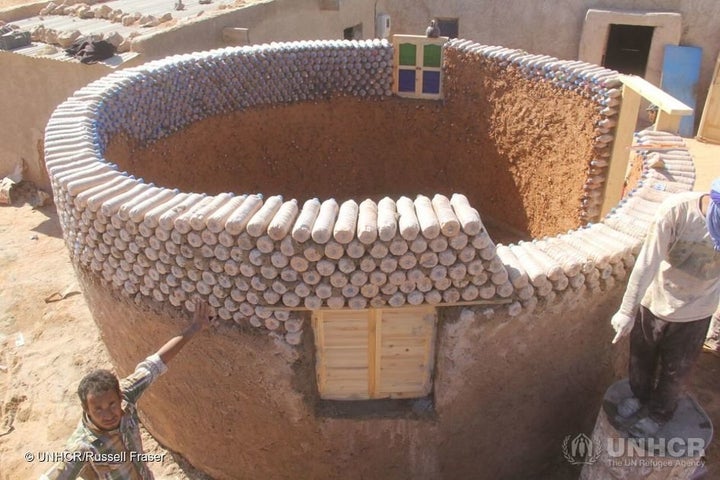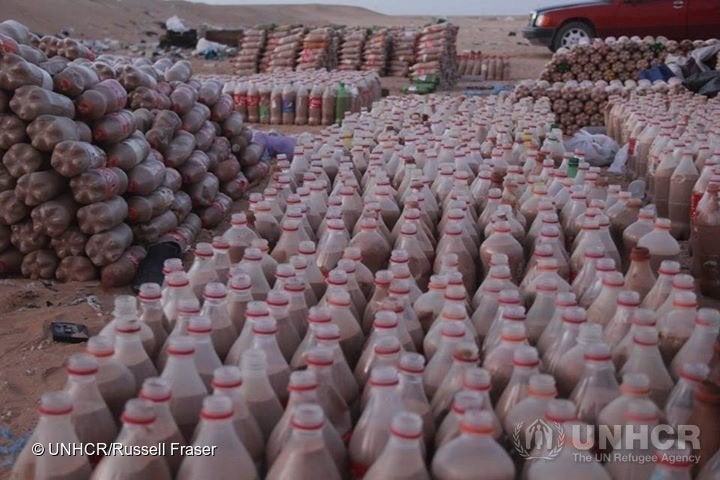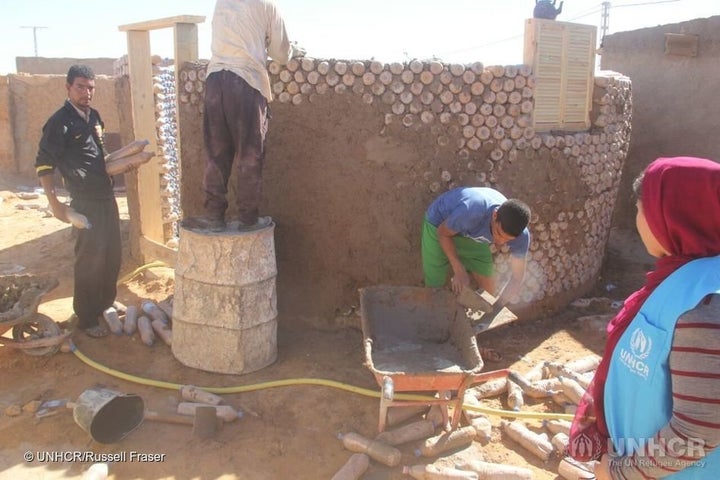This story is part of a series on ocean plastics.
In a refugee camp in the Sahara desert, one man is making homes more durable in the face of tough weather conditions ― and he’s using trash to do it.
Tateh Lehbib Breica, a Sahrawi refugee living in a camp in Tindouf, Algeria, is building homes for other refugees out of plastic bottles filled with sand, according to the United Nations Refugee Agency (UNHCR) video above that was posted last week.
Breica lives in Awserd refugee camp, one of five camps around Tindouf where Sahrawi refugees have lived for over 40 years, according to a January UNHCR post. Thousands of Sahrawi people, an indigenous group of the Western Sahara, were displaced to Algeria in 1975 during the Western Sahara War, and many have remained there since, according to the BBC.
Today, the desert climate in Tindouf ― including storms, heavy rains, and temperatures of up to 113 degrees ― often causes damage to refugees’ homes, which are either tents or made out of adobe mud brick, according to UNHCR’s video.
One storm in 2015, for instance, destroyed thousands of homes in the area.
Breica’s plastic bottle homes make for a more durable structure than adobe when it comes to fighting heavy rains, reports UNHCR. The circular shape also makes them aerodynamic, which helps to withstand storms.
“We spend months building the other fragile dwelling,” Mailaminin Saleh, a refugee who currently lives in one of Breica’s plastic bottle houses, told ThinkProgress. Her former house, made of mud brick, was destroyed in floods, after which she had to live in a tent.
“It is stronger and more efficient here,” she said. “I am very happy that I have benefited from this initiative.”
Last year, after Breica built a first plastic bottle home for his grandmother, his idea was selected by UNHCR for funding, reports Middle East Eye. He has since worked with them to build another 25 houses across five camps in the area.

Breica ― who studied renewable energy in university ― built each home out of around 6,000 plastic bottles found around the refugee camps and surrounding dumps, reports Middle East Eye. The bottles are packed with sand and straw, stacked in a circular shape, and then coated with cement and limestone.
The houses not only help solve for challenging weather, but also tackle another major problem: plastic waste. At the refugee camps around Tindouf, plastic bottles are usually tossed in the trash and not recycled, reports ThinkProgress.
More than 80 percent of recyclable plastic bottles end up in landfills each year, according to National Geographic. Plastic takes hundreds of years to decompose, and many scientists estimate that it never fully breaks down.
“We all know that plastic does not get undone in nature until after hundreds of years,” Lehbib told Middle East Eye. “There are estimates that the number is more than 300 years, and that’s how long these homes will survive, as long as the bottles are not exposed to the sun.”

Breica’s project is not the first to use bottles to build homes: One nonprofit built roofs out of plastic bottles in Ecuador in 2014, and one man built his own home out of beer bottles in Argentina in 2010.
“These homes also help create jobs in a place where there is hardly any,” Breica told Middle East Eye. “It takes four people to pick up the bottles, four others to fill them, and four masons to lift it. Drivers are also required to transport sand and bottles. We are creating an industry around plastic houses.”

